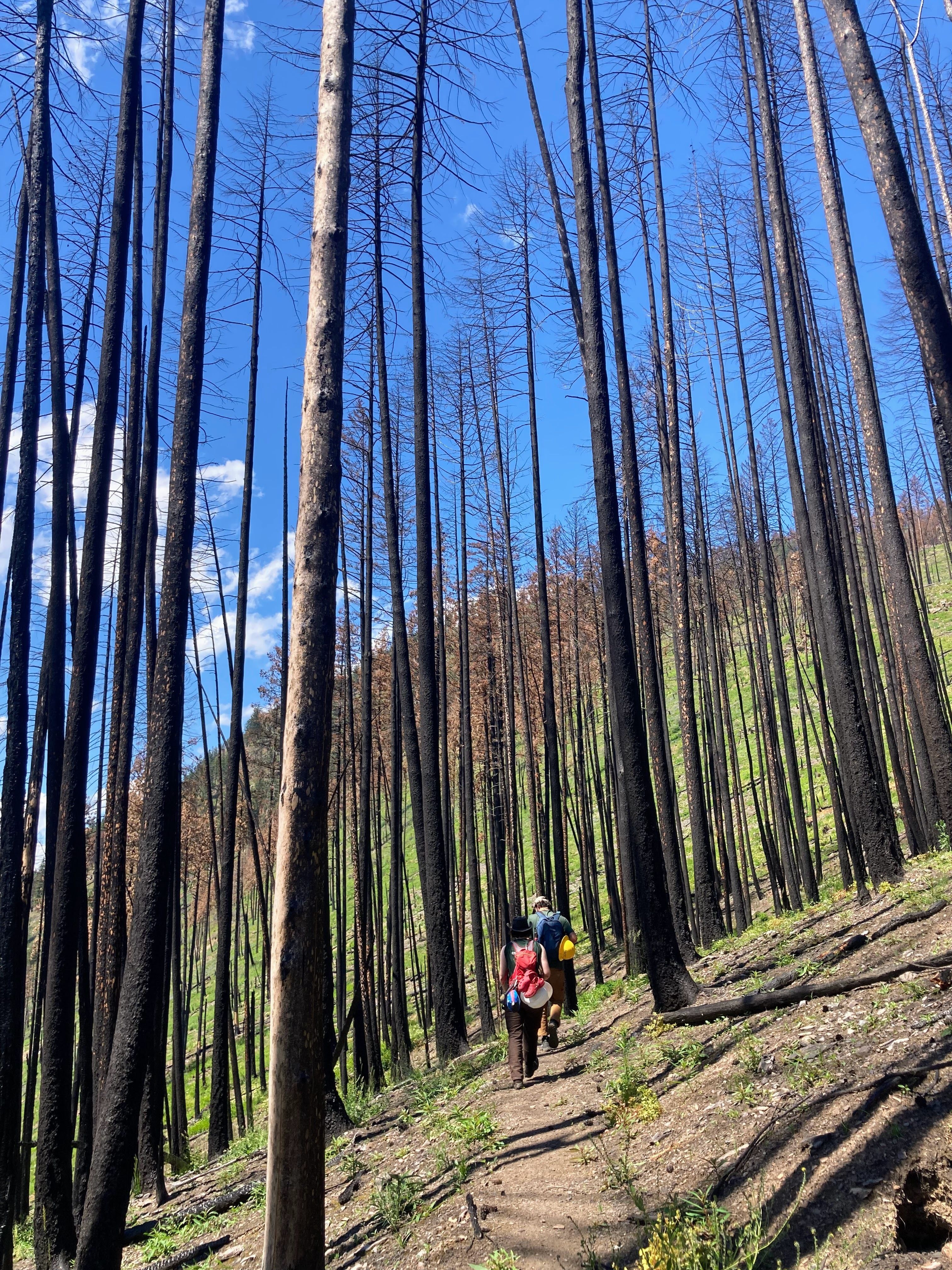
An unsettling absence of green. Ashy, dark forest floors bathed in sunshine, where shade was once abundant. A homogeneous landscape of black tree stalks, bare ground and burnt orange cedar trees greet us. A lone bird calls in an eerily quiet forest. A freshly burned forest is a unique ecosystem to survey in, so starkly different than the usual wilderness areas our crew has worked in. Our task was to survey a year old burn outside Thompson Falls, MT for noxious, invasive weeds to understand how the forest ecosystem is recovering from fire and to prevent their colonization in the vulnerable forest landscape.
Walking through these spaces, it’s hard not to feel the great loss that occurred. I found myself grieving for the trees that had been around much longer than me, long-established native plants that fed so many young fledglings, diverse assemblage of invertebrates, and countless other critters that were victims of the fire. Looking over the vast mountain hillsides where the scope of the burn was vast and starkly apparent, I tried to conceptualize the sheer amount of carbon all the plant life was storing, that was then released into the atmosphere during the fire. While difficult to witness, this grief is important. Grief manifests as a form of love and radical care that is a necessary part of feeling connected to the world around us, it fosters care within us for our surroundings that provide us with so many gifts and moments of joy. To be a part of this forest’s recovery is a deeply meaningful and tangible way of offering care back to the ecosystem that has cared for us in countless ways.
While I felt the absence of so many in these spaces, these forests were not without signs of life, of hope. A female ruffed grouse shepherding her tiny, precious chicks off the trail through the burn. The shine of re-sprouting beargrass, a fire adapted species, eager and willing to be the first to jumpstart the re-greening of the forest floor. A lone, camouflaged morel offering its fruiting body to the critters returning to the recovering forest. Time and time again, nature shows us that she can and will persist. It’s a special honor to walk the land and both witness and hold the harm it experienced in our bodies and to contribute to its healing, ensuring native species recolonize and thrive in the landscape.

![[Image Description: Four MCC members wade across a river. In the background, there are hillsides covered in gold from the quaking aspens, and deep green pine trees.]](https://cdn.firespring.com/images/bc3da824-0c18-4b37-a2dd-27ae52872fd1.jpg)



